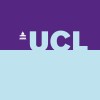
Kinetics of Plasma and Serum Levels of Brain-Derived Neurotrophic Factor (BDNF) in Patients With...
Ischemic StrokeThe aim of this study is to show for the first time that treatment with intravenous fibrinolysis using rt-PA in patients with recent ischemic stroke is accompanied by increases in circulating levels of BDNF, which may reflect an increase in BDNF synthesis in the brain. The analysis of the recovery of functional and cognitive abilities as well as mood at 3 months will allow us to study the impact of BDNF on these parameters. Thus, depending on the results obtained, circulating BDNF could serve as an early marker of these.

Fear of Falling in Patients With Chronic Stroke
StrokeThe aim of the study is to evaluate whether combining cognitive-behavioral therapy (CBT) with task-oriented balance training (TOBT) is more effective than general health education (GHE) together with TOBT in promoting fear of falling and reducing activity avoidance behavior.

Upper Limb Stroke Rehabilitation Via the VirtualRehab Platform
StrokeThis study will deliver a 12-week exercise-based upper limb virtual reality, non-immersive, rehabilitation programme for stroke survivors. The aims are to:1. to assess the acceptability and usability of the VirtualRehab platform for delivery of stroke rehabilitation at home: 2. to find if stroke survivors adhere to 'prescribed' use of the VirtualRehab platform over a 12-week period; 3. to assess the viability of using randomised length of baselines and repeated measures during the intervention period to inform subsequent study to find the optimum therapeutic dose 4. to estimate how a 12-week period of using the VirtualRehab platform could change motor impairment and functional capacity.

Feasibility and Effectiveness of Rehabilitation Nursing for Acute Stroke
Acute Ischemic StrokeNursingIn the clinical setting, it is difficult to obtain effective rehabilitation during the acute phase, the reasons may include insufficient awareness of early rehabilitation due mainly to a limitation in number and variety of rehabilitation professionals in Low- and middle-income countries. It is necessary to shift tasks to other healthcare providers who are trained to provide rehabilitation like nurses. The purpose of this study is to examine the feasibility and effectiveness of a modified Barthel Index based rehabilitation nursing program on acute stroke inpatients.

Effectiveness of a Wearable Device-based Assisted Post-stroke Rehabilitation System
Post-Acute-Stroke RehabilitationMultidisciplinary rehabilitation facilitates functional recovery after stroke, and adherence to rehabilitation guidelines is associated with improved outcomes. We assessed the efficacy of a wearable device-assisted rehabilitation system in addition to conventional therapy compared to conventional therapy alone. A total of 127 eligible acute stroke inpatients were enrolled. There were 76 males (59.8%). The mean age of the participants was 57.45 years; 63 and 64 participants were randomized to the WG and CG, respectively. Both groups showed significant improvements in mRS scores at 90 days (WG: -0.68 [95% confidence interval (CI), -0.94 to -0.42]; CG: -0.56 [95% CI, -0.74 to -0.38]; P<0.0001), but only the WG had significant improvements between 30 and 90 days (-0.36; 95% CI, -0.72, -0.007; P=0.049). Both groups had significant improvements in secondary outcomes at 90 days, but there was no difference between groups.

Evaluation of the Use of the Atalante Exoskeleton in Patients Presenting an Hemiplegia Due to Cerebrovascular...
StrokeStroke4 moreThe INSPIRE study is interventional, European, prospective, open, multicentric, each patient being his/her own control. It is conducted to assess the safety and performance of the Atalante exoskeleton system in patients presenting an hemiplegia due to cerebrovascular accident. The primary endpoint is defined by the reported adverse events. The study will include 40 patients and takes place in six rehabilitation centers (4 in France, 1 in Luxembourg, 1 in Belgium).

Optimizing Hospital-to-home Transitions for Older Adults With Stroke and Multimorbidity
StrokeStroke is the leading cause of death and adult disability in Canada. Sixty percent of these older adults (> 65 years) will return to their homes after a stroke and will require ongoing rehabilitation. About 92% of older adults have two or more chronic conditions. These patients often require services from a number of providers in a number of settings and are therefore, susceptible to fragmented health care when transitioning from hospital to home. New interventions are needed to improve the quality of care as patients move from hospital to home after a stroke. The proposed research project will examine the impact of a new intervention on patient/caregiver health, patient/caregiver and provider experience and costs, compared to usual health care services. The new intervention will be coordinated by a system navigator and consists of four core components: 1) development of a comprehensive discharge plan, 2) up to 6 home visits (supported by phone calls) by an interprofessional outpatient team, 3) monthly case conferences including the interprofessional care team who will discuss and focus on the patient's goals and care needs, and 4) linkages to other healthcare and community services. This multidisciplinary project will build on our previous study, which provided the groundwork for further study of this new intervention.

Transcranial Direct Current Stimulation in Post-stroke Fatigue
FatigueStrokeThis is a double-blind, sham-controlled, anodal tDCS study to understand the effect of increasing motor cortex excitability on post-stroke fatigue.

Comparison of NT Vs Body Weight Supported TT Along With CT on Lower Extremity in Chronic Stroke...
Chronic StrokeTo determine the effect of Neurodevelopment Treatment vs Body Weight Supported Treadmill Training along with conventional therapy on lower extremity among chronic stroke patients.

OptiCogs: A Multicomponent Intervention to Rehabilitate Cognitive Impairment in People Post-stroke...
StrokeCardiovascular1 moreOptiCogs Online is a complex multicomponent intervention comprising of cognitive, physical activity and educational components.
